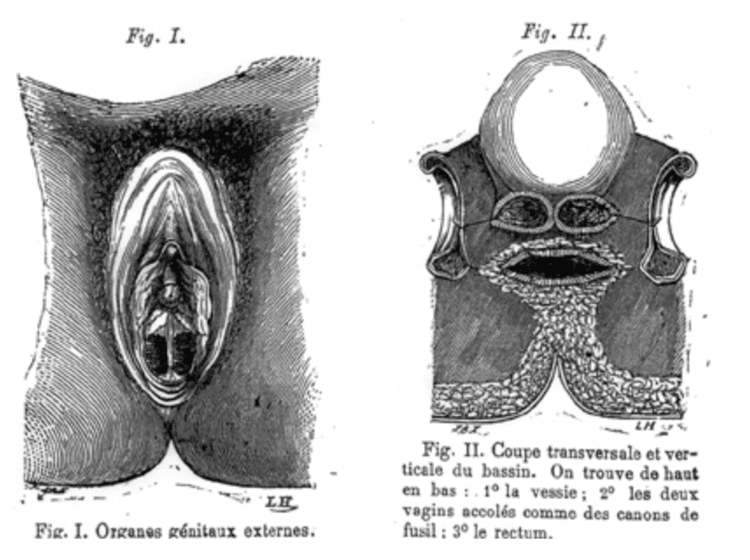ICD-10 Q52.1 | ICD-9-CM 752.49, 752.47, 752.46 | |
 | ||
Similar Vaginal ring, Vaginal hypoplasia, Vaginal fornix | ||
A vaginal septum is a congenital partition within the vagina; such a septum could be either longitudinal or transverse.
Contents
Longitudinal septum – double vagina
A longitudinal vaginal septum develops during embryogenesis when there is an incomplete fusion of the lower parts of the two Müllerian ducts. As a result, there is a double vagina. There may be associated duplications of the more cranial parts of the Müllerian derivatives, a double cervix, and either a uterine septum or uterus didelphys (double uterus).
The person with a longitudinal vaginal septum may be asymptomatic and not aware of the condition. If dyspareunia is a problem a simple resection of the septum could be performed.
Transverse septum
A transverse septum can form during embryogenesis when the Müllerian ducts fuse improperly to the urogenital sinus. A complete transverse septum will block menstrual flow and is a cause of primary amenorrhea. The accumulation of menstrual debris behind the septum is termed cryptomenorrhea. Some transverse septa are incomplete and may lead to dyspareunia or obstruction in labour. A surgical incision will relieve the situation.
